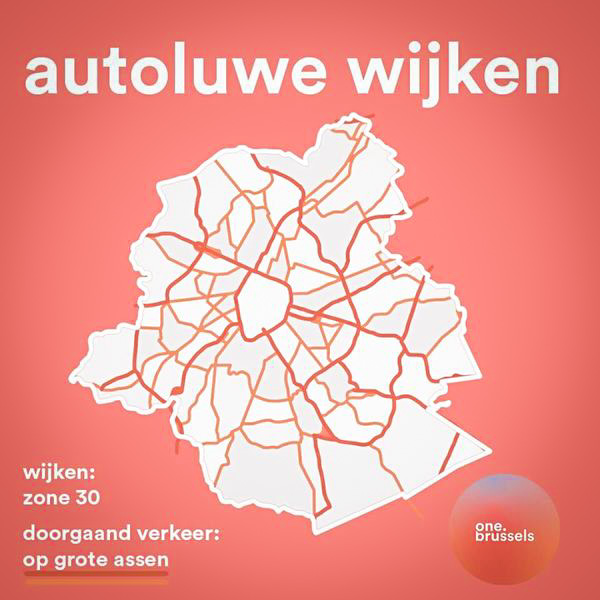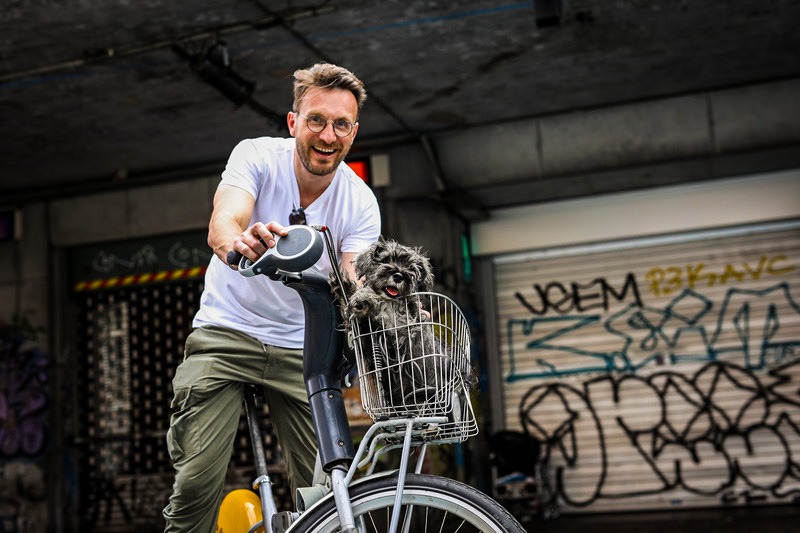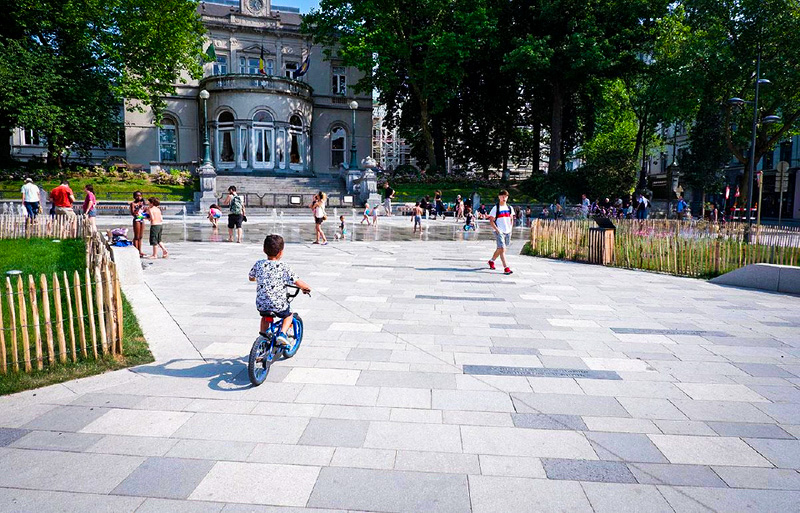This article was written by Aseniya Dimitrova for TheMayor.eu. You can find the original post here. It is an interview with Pascal Smet, the Secretary of Urban Planning of the Brussels- Capital Region.
Pascal Smet is a Belgian politician, former Minister of Mobility and Public Works.
Currently, he is the State Secretary for Urban Planning and Heritage with the Brussels Government. Additionally, Smet is responsible for European and International Relations, Foreign Trade, Firefighting and Emergency Medical Aid.
He is also a member of the VGC (Flemish Community Commission of the Brussels-Capital Region) board for Culture, Youth, Sport and Community Centres.
Mr. Smet, you moved to Brussels more than two decades ago. What was the city like back then? Why do you call the facilitation of car access in Brussels a big mistake?
When I moved to Brussels more than 25 years ago and walked its streets, I admired its beautiful buildings and met many welcoming Brusselers. But I also discovered a city with great, untapped potential.
Squares and streets were almost entirely reserved for cars and soulless architecture was everywhere. In several European cities, the evolution towards sustainable urban development had already started, but in my Brussels that was still a dream.
Brussels was a typical example of a city for cars. People were almost encouraged to live outside of the city and daily commuting was facilitated by constructing motorways leading right into its core.
The quality of life of the residents living along these motorways had been completely ignored. This resulted in low-quality public space, noise and air pollution. People who could afford it left these neighbourhoods and settled elsewhere in or outside the city.
I am pretty sure in 25 years the introduction of the private car in our cities will be seen as a big mistake. With the work we have been doing in Brussels for several years now, we are gradually correcting these mistakes.
Speaking of which, do you think that leaving the car behind is a matter of mentality or a matter of the availability of good infrastructure and a variety of sustainable transport alternatives?
It certainly is a combination of several factors, but there is a very easy theory in urban planning: make space for cars and you’ll get cars, make space for pedestrians and cyclists and you will get pedestrians and cyclists. I can confirm this in Brussels. The number of cyclists doubled in the last five years, traffic-restricted neighbourhoods are flourishing right now and before Covid-19 our public transport company was moving the most passengers in its history.
Another important element, next to infrastructure, is the shift from car-ownership to the ‘mobility as a service’ principle. Technology is a great ally in making this modal transition.
Your smartphone is all you need to make the best mobility choice for each individual journey. It is no longer necessary to have your own car parked nearby and shared mobility companies are anticipating this wisely. As a forward-looking government, we created a strong legal framework that welcomed these companies but also clearly defined the rules of the game.
What have you done to improve the environmentally friendly forms of transport in Brussels?
The ‘lowest’ emission zone is a zone where walking, cycling and public transport get priority. So, any practice (be it infrastructural or educational) promoting walking, cycling and the use of public transport has an impact.
The policy of improving air quality and reducing the impact on climate goes far beyond concrete measures for me. We invest massively in safe cycling infrastructure and public transport, we developed a mobility plan, called “Good Move”, which divides Brussels into 50 neighbourhoods that will be made low-traffic in the coming years, we create quality public space. And of course, we take measures which directly impact climate and air quality: We are electrifying the bus fleet, we are planting loads of trees and we introduced a Low Emission Zone which will gradually ban vehicles running on fossil fuels.

How has the quality of life improved since the introduction of the Low Emission Zone in 2018 and have you encountered any opposition to this measure?
Introducing a Low Emission Zone (LEZ) is not and should not be an easy measure. After all, a poorly planned introduction of a Low Emission Zone can have potentially enormous social consequences.
I feel proud of the way this LEZ was introduced in Brussels back in 2018. Our focus during the preparations was on the accompanying measures and the mobility alternatives.
Our goal was not to punish people or to make them buy a new, less polluting, car. Our goal was to guide people in adopting new mobility habits.
The first results of the LEZ are encouraging. The number of older diesel vehicles on the roads has fallen significantly and the quantity of NOx and PM2.5 emitted by cars has also decreased.
In the medium term, air quality will improve drastically thanks to the LEZ. This will improve the quality of life and health of all Brussels residents.
You have been involved in politics in various roles, but you seem to be in your element in your current position as Secretary of the Brussels-Capital Region. What opportunities does that give you to change the urban environment?
I have been working for almost a year now as Secretary for Urbanism and International Relations and I do feel great. As you might know, I like challenges in life. Exploring Brussels’ untapped potential is an amazing challenge.
I started a career in Brussels politics 15 years ago. In 15 years, 10 years of which I was Minister of Mobility and Public Works, I helped initiate its metamorphosis.
Since then, the path has been paved and Brussels has decidedly chosen to become a city for people, instead of remaining the city for cars that I discovered 25 years ago. Many squares have transformed from open-air car parks to meeting places and many of our streets have transformed from motorways to beautiful boulevards or car-free avenues.
Our public transport network has expanded and twice as many people now use it. Not only do we have new tram and bus lines, but we also started the works on the new north-south metro connection.

Today, it is time for Brussels to take the next important steps. We will bring our architecture and our public spaces to the next level and we will place Brussels on the international map as the ambitious city with a strong personality that it is.
That is why I will continue to give public spaces back to the Brusselers. We will give less space to cars, a space that we will use to make beautiful areas where young and old can play, walk, ride their bike, relax or just enjoy.
That is why I will protect our architectural heritage and renovate it while also focusing on new, stunning buildings and squares in the city.
That is why I will promote Brussels in the coming years as the cosmopolitan, creative and dynamic city that it is.
In view of the pressing issues facing cities, caused by global warming, what are the changes that are needed to make public spaces more liveable and to make Brussels, in particular, a future-proof, cosmopolitan region? How do you cooperate with the communes to accomplish this?
On the urban level, our focus now is on permeability and bringing nature back to the city. By doing this we respond to different challenges such as improving quality of life and combating global warming. To achieve this, we work together with various administrations at the federal, regional and local levels.

Has the coronavirus pandemic influenced your ideas for the transformation of Brussels? In what ways?
I was convinced of the importance of quality public space long before the virus came, but I notice that this awareness has affected a much larger group of citizens since the coronavirus pandemic.
We no longer collectively look at public space for its purely functional purposes, for example, to get around. We now understand that the public space is also where we meet, relax, play and practice sports. This awareness is the key to making our city everyone’s living room!


